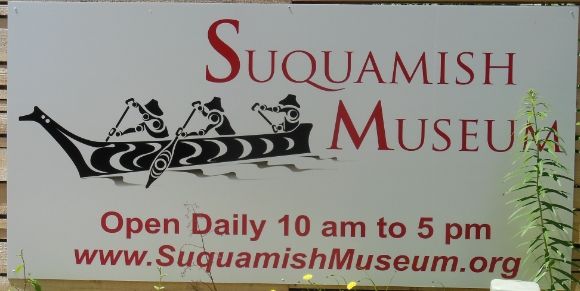
The area along the Pacific Coast north of California and between the Cascade Mountains and the ocean, is the home to many Indian nations who traditionally based their economy on the use of sea coast and river ecological resources. The Suquamish are the people of the clear salt water. For more than 10,000 years they have occupied that area known today as the Kitsap Peninsula, Bainbridge Island, Blake Island, and parts of Whidbey Island.
“We are the Suquamish people. We are a tribe, a nation, a culture, and a family.
We share a proud heritage founded on the teachings of our ancestors, and an enduring future forged from our spirit, wisdom, and enterprise.
We are born of these ancient shores, where the water touches the land, and where the gifts of opportunity are revealed with every changing tide.
Wherever those tides may carry us, these shores will always be our home.”

One wall of the museum (shown above) presents a time-line history of the Suquamish people.
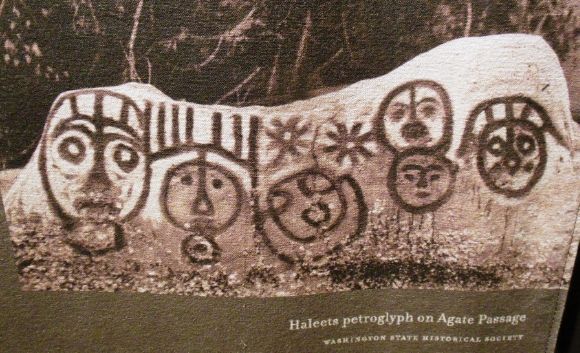
One of the most important Suquamish villages once stood on the shores of Agate Passage. This is where the Suquamish built Old Man House, the largest longhouse on the Salish Sea. This was a major intertribal gathering place where people from all across the region came together for trade, celebrations, and diplomacy. In 1841, Joseph Perry Sanford, a member of the United States Exploring Expedition, described the Old Man House:
“It measured 200 ft by 100 ft. The floor is of earth and sunken. It had on either side 20 uprights and on which were rudely carved uncouth figures with head, eyes &c.”
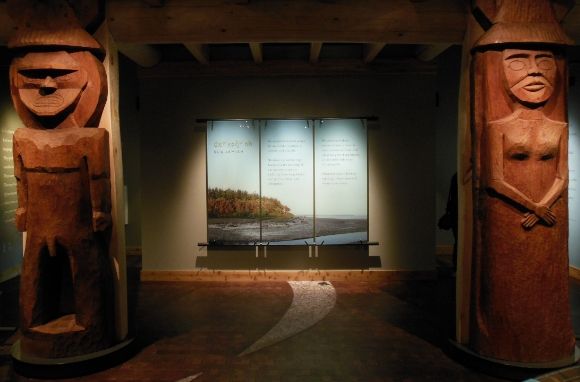
The entrance to the museum is between two carved house poles which are sometimes called the welcoming figures.
The Museum:

Shown below are some of the items displayed at the museum:
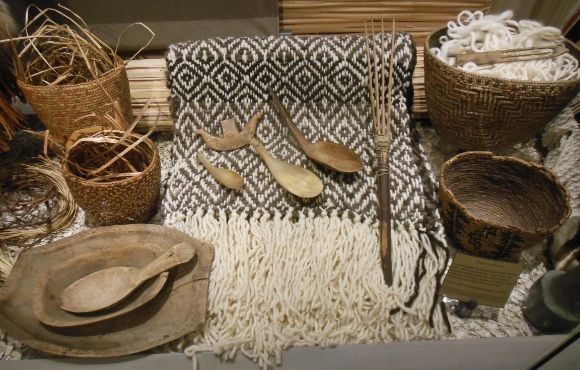
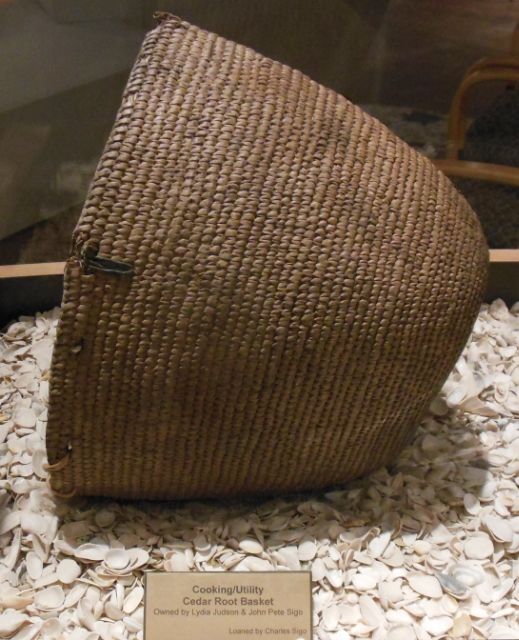
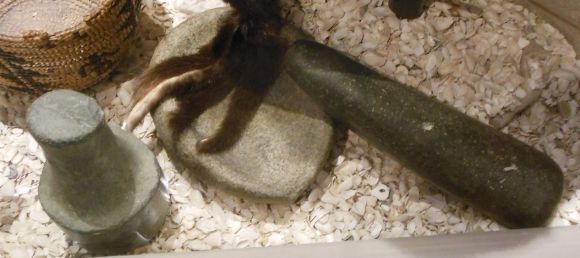
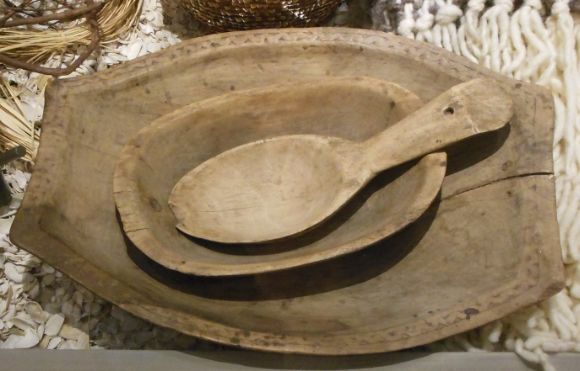

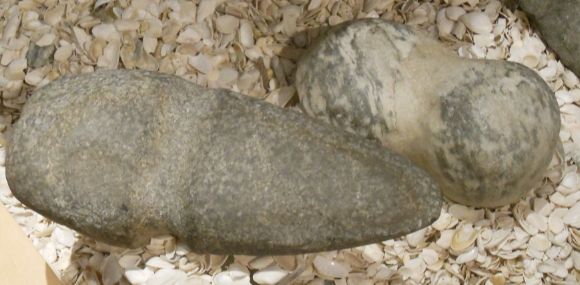
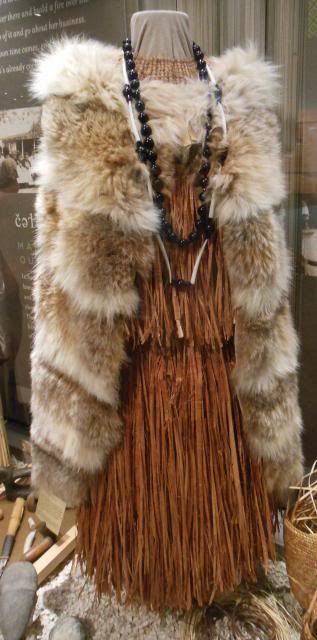
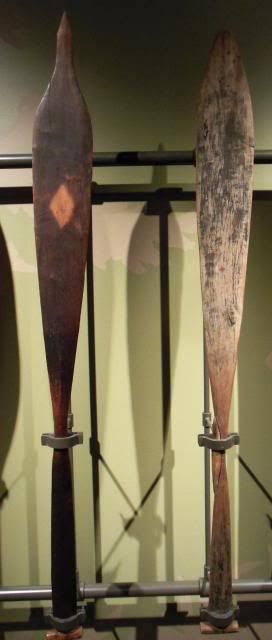

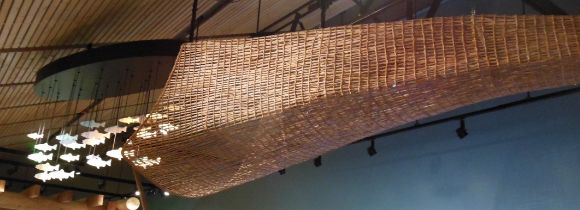
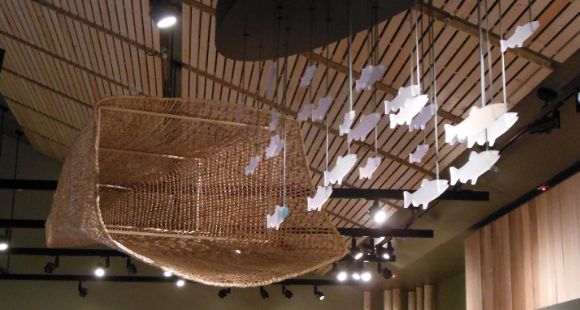
The Squamish were traditionally a fishing people. Mounted on the museum’s ceiling is a display (see photos above) showing a woven net/basket and a school of fish.
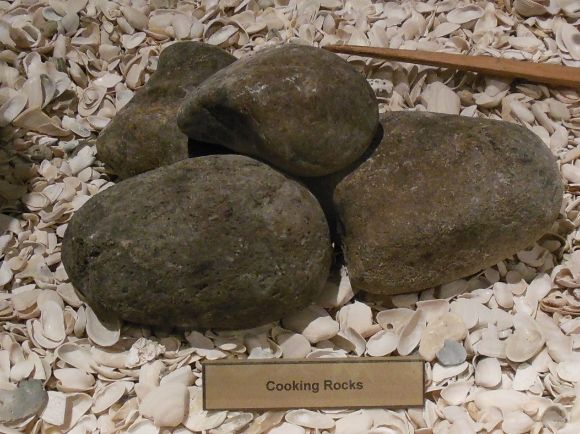
The rather nondescript rocks shown above, labeled as “cooking rocks”, were heated in a fire, then dropped into a water-filled basket. In this way, the water could be brought to a boil and the food cooked. It should be noted that not just any rocks can be used for this since many rocks simply disintegrate when heated.
Spirituality:

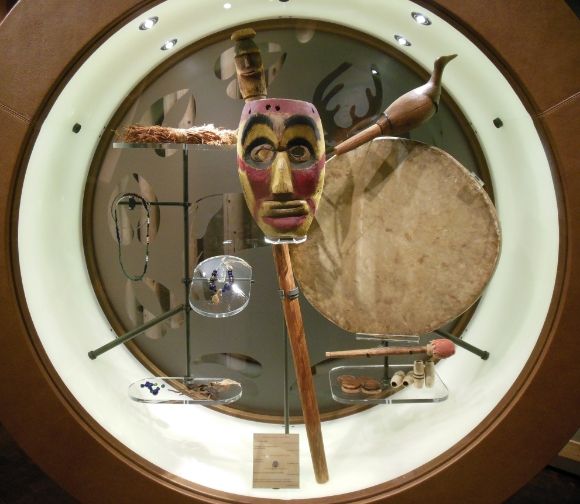
As with other Indian tribes, living a successful life depended on the assistance of spiritual helpers. Individuals had songs and dances, set to the rhythms of hand drums, to obtain their help. Much of the carving and painting on both common and ceremonial objects was designed to gain cooperation from one’s spiritual guides.
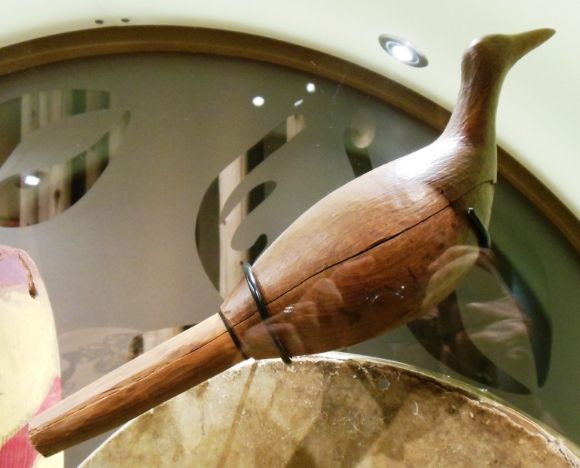
Shown above is a raven rattle.
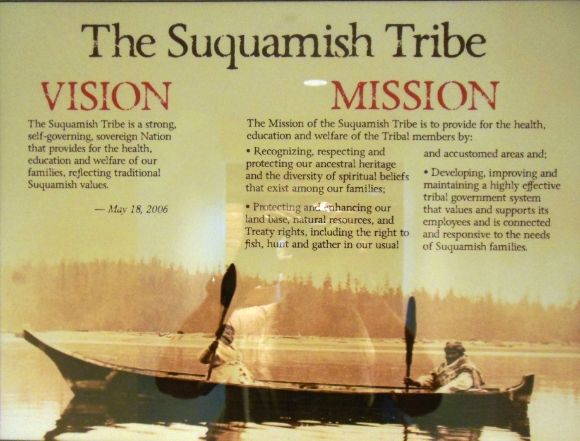
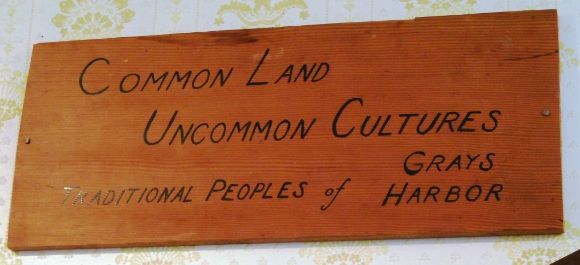
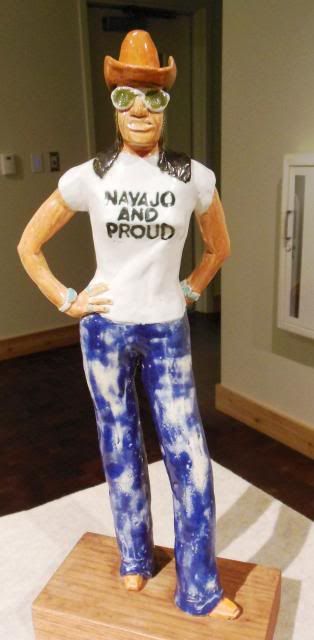
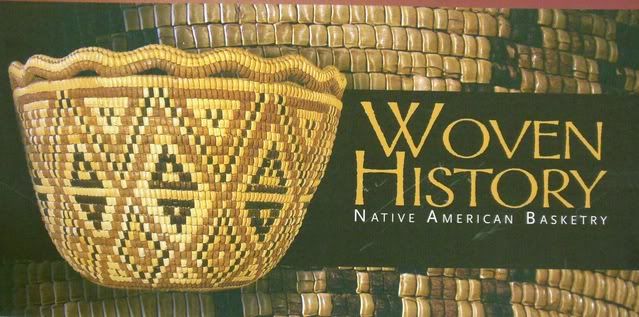
Such a rich and vibrant and colorful culture; spiritual in all manner. If only white man could uncloud his eyes and lift off his/her arrogance and see how much richer white mans culture could be embracing the first nations’ knowledge and respect for and of mother earth.